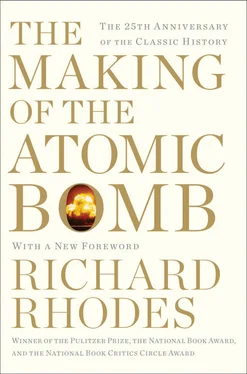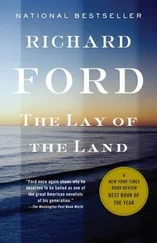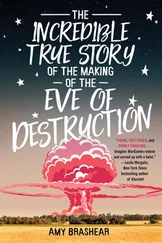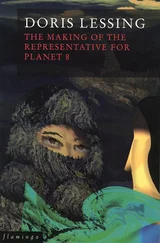The second law specifies that heat will not pass spontaneously from a colder to a hotter body without some change in the system. Or, as Planck himself generalized it in his Ph.D. dissertation at the University of Munich in 1879, that “the process of heat conduction cannot be completely reversed by any means.” Besides forbidding the construction of perpetual-motion machines, the second law defines what Planck’s predecessor Rudolf Clausius named entropy: because energy dissipates as heat whenever work is done—heat that cannot be collected back into useful, organized form—the universe must slowly run down to randomness. 89This vision of increasing disorder means that the universe is one-way and not reversible; the second law is the expression in physical form of what we call time. But the equations of mechanical physics—of what is now called classical physics—theoretically allowed the universe to run equally well forward or backward. “Thus,” an important German chemist complained, “in a purely mechanical world, the tree could become a shoot and a seed again, the butterfly turn back into a caterpillar, and the old man into a child. No explanation is given by the mechanistic doctrine for the fact that this does not happen…. The actual irreversibility of natural phenomena thus proves the existence of phenomena that cannot be described by mechanical equations; and with this the verdict on scientific materialism is settled.” 90Planck, writing a few years earlier, was characteristically more succinct: “The consistent implementation of the second law… is incompatible with the assumption of finite atoms.” 91
A major part of the problem was that atoms were not then directly accessible to experiment. They were a useful concept in chemistry, where they were invoked to explain why certain substances—elements—combine to make other substances but cannot themselves be chemically broken down. Atoms seemed to be the reason gases behaved as they did, expanding to fill whatever container they were let into and pushing equally on all the container’s walls. They were invoked again to explain the surprising discovery that every element, heated in a laboratory flame or vaporized in an electric arc, colors the resulting light and that such light, spread out into its rainbow spectrum by a prism or a diffraction grating, invariably is divided into bands by characteristic bright lines. But as late as 1894, when Robert Cecil, the third Marquis of Salisbury, chancellor of Oxford and former Prime Minister of England, catalogued the unfinished business of science in his presidential address to the British Association, whether atoms were real or only convenient and what structure they hid were still undecided issues:
What the atom of each element is, whether it is a movement, or a thing, or a vortex, or a point having inertia, whether there is any limit to its divisibility, and, if so, how that limit is imposed, whether the long list of elements is final, or whether any of them have any common origin, all these questions remain surrounded by a darkness as profound as ever. 92
Physics worked that way, sorting among alternatives: all science works that way. The chemist Michael Polanyi, Leo Szilard’s friend, looked into the workings of science in his later years at the University of Manchester and at Oxford. He discovered a traditional organization far different from what most nonscientists suppose. A “republic of science,” he called it, a community of independent men and women freely cooperating, “a highly simplified example of a free society.” Not all philosophers of science, which is what Polanyi became, have agreed. 93, 94Even Polanyi sometimes called science an “orthodoxy.” But his republican model of science is powerful in the same way successful scientific models are powerful: it explains relationships that have not been clear.
Polanyi asked straightforward questions. How were scientists chosen? What oath of allegiance did they swear? Who guided their research—chose the problems to be studied, approved the experiments, judged the value of the results? In the last analysis, who decided what was scientifically “true”? Armed with these questions, Polanyi then stepped back and looked at science from outside.
Behind the great structure that in only three centuries had begun to reshape the entire human world lay a basic commitment to a naturalistic view of life. Other views of life dominated at other times and places—the magical, the mythological. Children learned the naturalistic outlook when they learned to speak, when they learned to read, when they went to school. “Millions are spent annually on the cultivation and dissemination of science by the public authorities,” Polanyi wrote once when he felt impatient with those who refused to understand his point, “who will not give a penny for the advancement of astrology or sorcery. In other words, our civilization is deeply committed to certain beliefs about the nature of things; beliefs which are different, for example, from those to which the early Egyptian or the Aztec civilizations were committed.” 95
Most young people learned no more than the orthodoxy of science. They acquired “the established doctrine, the dead letter.” Some, at university, went on to study the beginnings of method. 96They practiced experimental proof in routine research. They discovered science’s “uncertainties and its eternally provisional nature.” That began to bring it to life. 97
Which was not yet to become a scientist. To become a scientist, Polanyi thought, required “a full initiation.” Such an initiation came from “close personal association with the intimate views and practice of a distinguished master.” The practice of science was not itself a science; it was an art, to be passed from master to apprentice as the art of painting is passed or as the skills and traditions of the law or of medicine are passed. 98, 99You could not learn the law from books and classes alone. You could not learn medicine. No more could you learn science, because nothing in science ever quite fits; no experiment is ever final proof; everything is simplified and approximate.
The American theoretical physicist Richard Feynman once spoke about his science with similar candor to a lecture hall crowded with undergraduates at the California Institute of Technology. “What do we mean by ‘understanding’ something?” Feynman asked innocently. 100His amused sense of human limitation informs his answer:
We can imagine that this complicated array of moving things which constitutes “the world” is something like a great chess game being played by the gods, and we are observers of the game. We do not know what the rules of the game are; all we are allowed to do is to watch the playing. Of course, if we watch long enough, we may eventually catch on to a few of the rules. The rules of the game are what we mean by fundamental physics. Even if we know every rule, however… what we really can explain in terms of those rules is very limited, because almost all situations are so enormously complicated that we cannot follow the plays of the game using the rules, much less tell what is going to happen next. We must, therefore, limit ourselves to the more basic question of the rules of the game. If we know the rules, we consider that we “understand” the world.
Learning the feel of proof; learning judgment; learning which hunches to play; learning which stunning calculations to rework, which experimental results not to trust: these skills admitted you to the spectators’ benches at the chess game of the gods, and acquiring them required sitting first at the feet of a master.
Polanyi found one other necessary requirement for full initiation into science: belief. If science has become the orthodoxy of the West, individuals are nevertheless still free to take it or leave it, in whole or in part; believers in astrology, Marxism and virgin birth abound. But “no one can become a scientist unless he presumes that the scientific doctrine and method are fundamentally sound and that their ultimate premises can be unquestioningly accepted.” 101
Читать дальше












